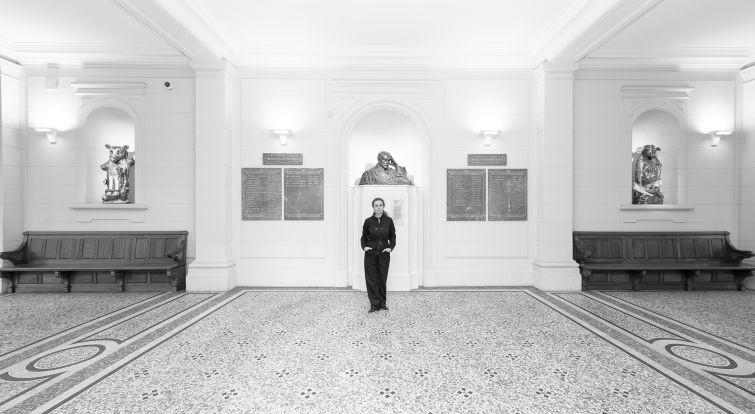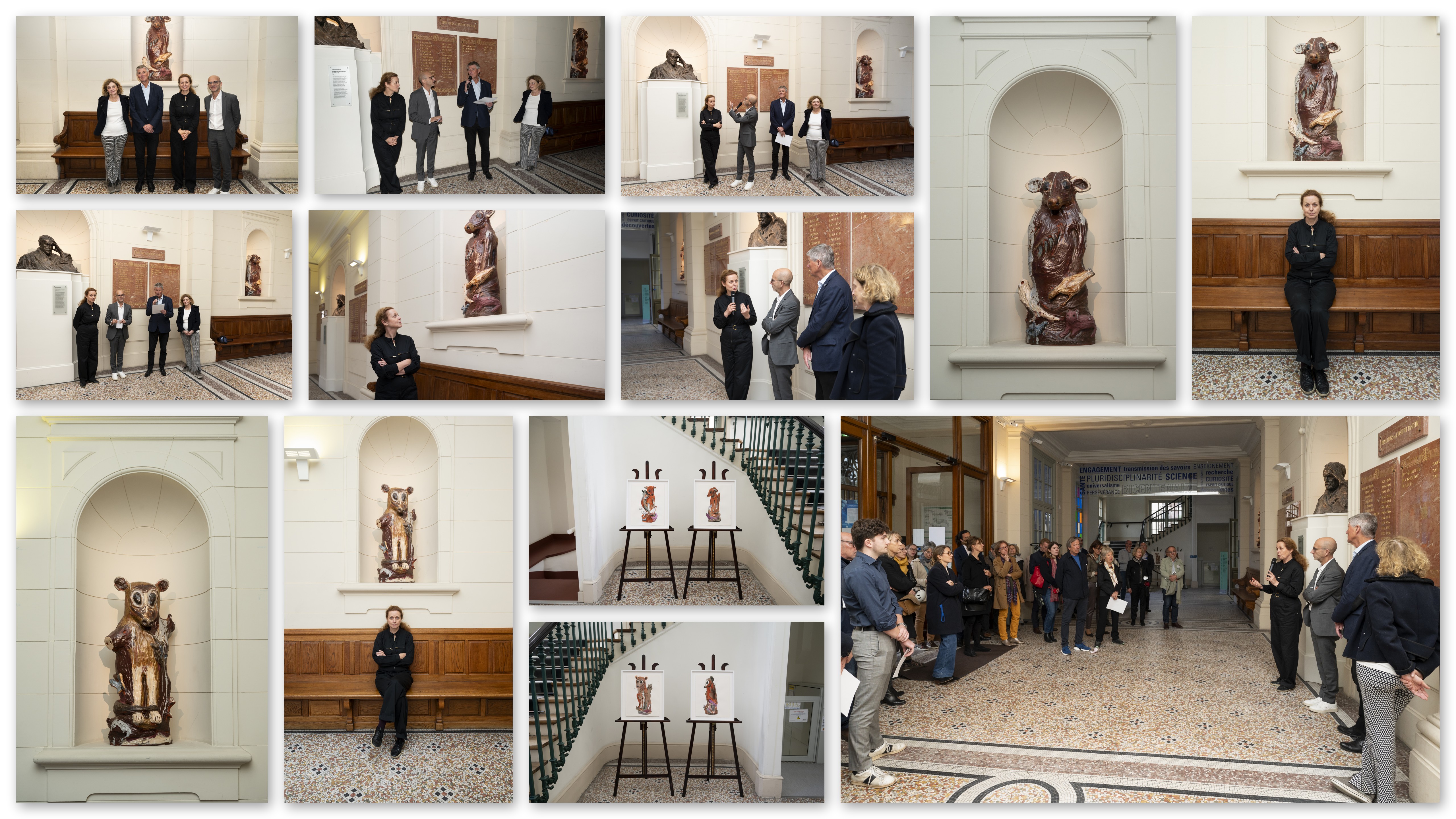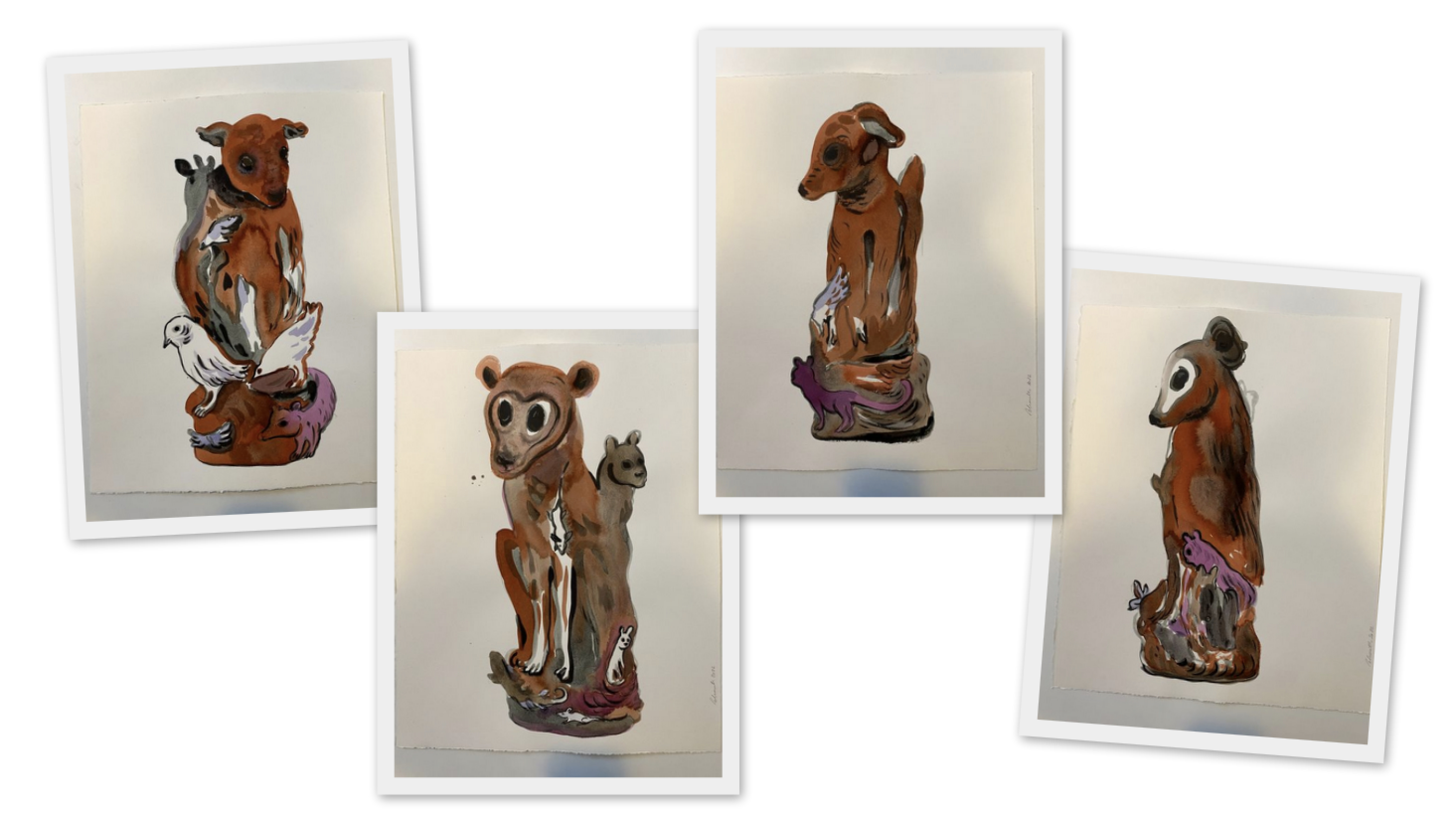
 SCIENCE AND ARTS
SCIENCE AND ARTS
Celebrating art and science with new works by Françoise Petrovitch produced for the bicentenary of Louis Pasteur's birth
On October 17, two artworks by Françoise Petrovitch were officially unveiled in the hall of the Émile Duclaux building. These works are the result of a further collaboration between the Institut Pasteur and the artist in 2022 in connection with the bicentenary of Louis Pasteur's birth.


The artist Françoise Petrovitch first worked with the Institut Pasteur in 2021 for the Organoid project, led by scientific coordinator Olivier Schwartz and supported by the Daniel & Nina Carasso Foundation. This first collaboration led to the painting "Giant Monkey," which was added to the already extensive collection in the CIS hall on June 16, 2021.
In 2022, in connection with the commemoration of the bicentenary of Louis Pasteur's birth, the Institut Pasteur approached the artist again and commissioned two sculptures representing "the bestiary of Louis Pasteur" and evoking animals of interest for infectious diseases.
These depictions of animals, a favorite subject of the artist, echo the animals depicted in the crypt of the Pasteur Museum (dog, wolf, rabbit, chicken, birds, etc.). The works were "officially" unveiled on October 17 in the hall of the Émile Duclaux building, in the two alcoves located on either side of the bust of Louis Pasteur. To mark the occasion, a launch ceremony was held on October 17 and attended by the artist.
François Gardy/Institut Pasteur
After an introduction by Olivier Schwartz, Stewart Cole gave an address in which he expressed his sincere thanks to the artist for her "friendly commitment to the Institut Pasteur for several years now" and also for her work, for "this successful encounter between the Institut Pasteur's research and (her) own artistic vision." After a presentation of the works by the artist herself, the event continued with a cocktail reception.
Read the interview with the artist
While the labels of the two sculptures were being produced, some research was also carried out to find out more about the creator of the bust of Louis Pasteur and the history of this sculpture. The investigative work, led by the museum teams and Olivier Schwartz, resulted in a special new label for the bust and its creator, Naoum Aronson.

Naoum Aronson was born in 1872 in Krāslava in Russia. He studied at the Vilnius Academy in Lithuania before moving to Paris in 1905, joining the artists in the "School of Paris." He was a student of Auguste Rodin, who influenced his style. He is known for his busts of key figures including Chopin, Berlioz, Lenin, Tolstoy and Beethoven, as well as for the work "La Douleur de Salomé," housed in the Musée d'Orsay. In 1905, he received a gold medal in Liège for his monument to Beethoven in the grounds of the composer's house in Bonn. In 1940, he emigrated to New York to escape Nazi persecution, and he died there in 1943.
In 1923, the French government commissioned a bust of Louis Pasteur from the artist to mark the centenary of Pasteur's birth. This iconic stone bust has been kept in the grounds of the Institut Pasteur ever since and has been reproduced many times. Some replicas were given by the artist himself to the Institut Pasteur, which possesses five original works and replicas.
Naoum Aronson also produced the "Bust of Louis Pasteur thinking, holding his head," now housed in the hall of the Émile Duclaux building. There is very little information in the Institut Pasteur archives about the conditions in which the work was produced and acquired. Naoum Aronson is thought to have donated the sculpture to the Institut Pasteur in 1923.

